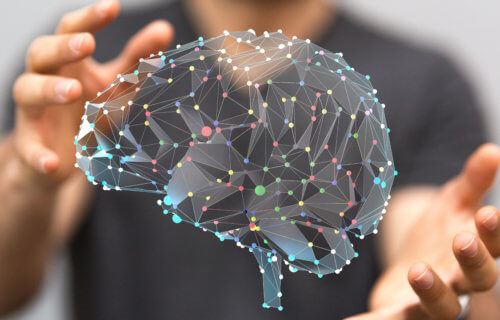PHILADELPHIA — “Eureka!” Archimedes shouted as he leaped out of his bathtub and ran through the streets of Syracuse naked. At least that’s how the story of Archimedes’ big “aha moment” regarding water-displacement goes. Scientists have long wondered what drives the creative processes that inspire discoveries and “aha moments.”
A new study out of Drexel University used neural recordings to show that in some people the brain’s reward system lights up with activity in response to a creative insight. This region also responds to enjoyable food, addictive substances, and sexual and other basic pleasures. The burst in activity of this brain network creates a cycle of behavior where the person keeps repeating the behavior to reactivate this burst in reward activity.
“The fact that evolution has linked the generation of new ideas and perspectives to the human brain’s reward system may explain the proliferation of creativity and the advancement of science and culture,” says John Kounios, PhD, a professor in Drexel’s College of Arts and Sciences and director of its Creativity Research Lab, in a university release.
The research team used anagram puzzles as their model of creative problem-solving. Anagram puzzles require people to unscramble a set of letters to find a hidden word. Researchers hoped participants would use creative insight and then experience the rush of “aha moments” while solving the puzzles.
Researchers recorded electroencephalograms (EEGs) while participants completed the puzzles. Participants noted which puzzles they solved through insights that popped into their heads versus puzzles they solved by methodically rearranging letters.
Participants also filled out questionnaires that measured their “reward sensitivity,” a measure of how motivated they are to gain rewards rather than avoid losing them. The authors classified participants into high- and low-reward-sensitivity categories based on their questionnaire results.
Results of the EEG analysis show that everyone experiences high-frequency “gamma-band” brain waves when they have an “aha moment.” Furthermore, high-reward-sensitivity participants experience an additional “gamma-band” burst of activity in the orbitofrontal cortex, a part of the brain’s reward system. Low-reward-sensitive people don’t show this burst in activity, despite having just as many “aha moments” as high-reward-sensitive participants.
Researchers note that the second burst in activity in high-reward-sensitive participants follows the insight by one tenth of a second. The creative insight triggers reward signals — methodically discovering the solution to a puzzle does not.
The authors offer some concluding remarks about reward sensitivity. The results of this study indicate that reward sensitivity can serve as a predictor of who is most likely to exercise and develop their creative abilities. These people might be more likely to engage in insight-generating recreational and vocational activities such as solving puzzles, reading murder mysteries, creating inventions, or doing research.
The study is published in NeuroImage.
Like studies? Follow us on Facebook!
